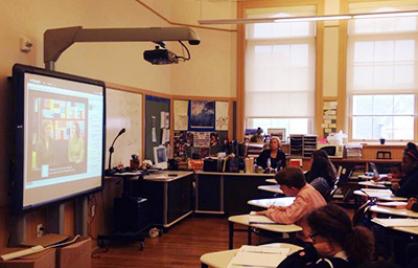
School Without Walls participated in a virtual exchange with Sagesse High School in Beirut, Lebanon. The webcast was hosted by the State Department's Cultural Preservation Center. Here is the perspective of Azaan Lambkin, a SWW student.
On Wednesday, October 22, Ms. Schulz’s period 1-2 class had the privilege of participating in a webcast organized by the US State Department with an archaeologist who specializes in Mesopotamia. After receiving a brief summary, we were joined by a school in Lebanon. We were given the time to ask questions to the archaeologist about the artifacts she had discovered as well as their implications for culture in the region.
The Lebanese school’s first question was, “How much influence do the Hammurabi laws have on American laws?”
The archaeologist responded that both Mesopotamia and America have a history of slavery, and also that the laws reflected the different punishments of the time. Hammurabi’s code was not law per se, but rather a collection of legal practices and social customs from across Mesopotamia. Further, the two law systems are different in that American law is not “eye for an eye”—a death sentence is not always the penalty for murder. The punishments for crimes are also a bit different—you won’t see public beatings or stonings accepted or condoned as punishments, at least not in modern day America.
The first question our class asked was, “What is the most interesting artifact you found in Mesopotamia?”
She said it was a burnt-down but preserved house that gave archaeologists clues on how the people of Mesopotamia lived. The house was full of cereal grains, which made the archaeologist think about the fate of the family living there. Did they survive the fire? Did they have food for the winter? Were they farmers or laborers? To me, the response showed the great depths that anthropologists and archaeologists go to with their thoughts and inferences, and how they can learn about culture from a few small artifacts.


